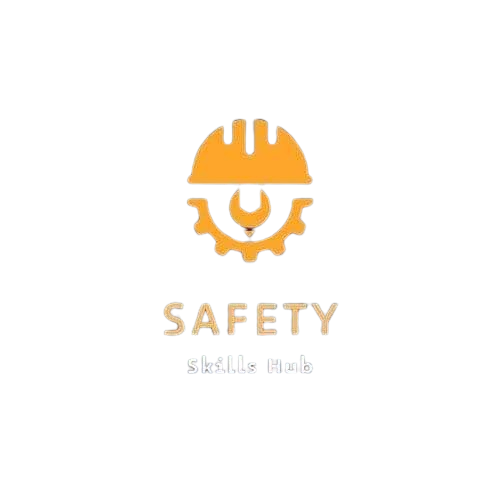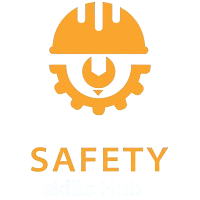FIRST AID
What is FIRST AID ?
First aid refers to medical attention that is usually administered immediately after the injury occurs and at the location where it occurred. It often consists of a one-time, short-term treatment and requires little technology or training to administer. First aid can include cleaning minor cuts, scrapes, or scratches; treating a minor burn; applying bandages and dressings; the use of non-prescription medicine; draining blisters; removing debris from the eyes; massage; and drinking fluids to relieve heat stress. OSHA’s revised recordkeeping rule, which went into effect January 1, 2002, does not require first aid cases to be documented. For example: A worker goes to the first-aid room and has a dressing applied to a minor cut by a registered nurse. Although the registered nurse is a health care professional, the employer does not have to report the accident because the worker simply received first aid. The selected references below provide more information on first aid.

Why is the FIRST AID course important?
Having some basic first aid knowledge is essential and here are 5 reasons why.
It does more than help save lives.
It’s true that having first aid training undoubtedly helps save lives. That’s not all though; giving appropriate first aid immediately can help to reduce a person’s recovery time and make the difference between the patient having a temporary or long term disability. You’ll learn how to remain calm in emergency situations and you’ll learn simple acronyms to help you recall the steps you need to take. First aid training will make you confident and comfortable and therefore more effective and in control when you need to be.
It enables you to increase patient comfort.
Not all accidents, injuries or illnesses require a trip to the hospital but it doesn’t mean they don’t cause pain and suffering to the patient. A child crying because of a bruised elbow or with a fever is in pain and is suffering. By knowing how to act – even just by employing simple techniques such as applying an ice pack correctly, or utilising appropriate bandaging, you’ll help to relieve their discomfort. You’ll also provide emotional support by remaining calm and collected which will make them feel more secure and reduce their anxiety levels.
It gives you tools to prevent the situation from becoming worse.
In some situations if a patient doesn’t receive basic first aid care immediately their situation will deteriorate – often rapidly. By being able to provide basic care you can stabilize a patient until emergency medical services arrives. You’ll learn how to use basic household items as tools if a first aid kit is not available meaning that you’ll be able to cope with many situations.
You’ll also be trained in how to collect information and data about what happened and the patients’ condition. This information will be passed on to the emergency services, which saves them time – you will be a valuable link in the chain of survival.
It creates the confidence to care.
Having a basic first aid knowledge means that you’ll be confident in your skills and abilities in relation to first aid administration. By taking first aid training, it helps you to reflect on yourself and how you and others react in certain situations. Having this understanding will boost your confidence in a wide range of non-medical day to day situations.
It encourages healthy and safe living.
One of the first things you will learn during your first aid training is that you must look after yourself and ensure your own safety as a priority. It’s not being selfish, it’s being practical. Keeping yourself safe means you are in a position to help others rather than needing help yourself. You will also learn about the importance of healthy living and how lifestyle habits and choices can increase or decrease your risks of developing problems such as coronary heart disease. Having this knowledge makes you more aware of your own health and alert to potential hazards posed by your surroundings.
What is the purpose of FIRST AID ?
The aims of first aid include preserving life, preventing injury from getting worse, aiding recovery, relieving pain, and protecting the unconscious. The main objective is to save lives. And first aid training is key to doing that if properly implemented. In this article, we share more about the main objectives of first aid training!
Preserve Life
Preserving life is the primary objective of doing first aid. This involves making sure that the injury is not a life-threatening one for the individual. It also involves calling ambulances as soon as possible and also performing CPR in extreme circumstances. Someone who is trained in first aid should check for vital life signs as well, to see if an injury is life-threatening. These signs include evidence of breathing, movement, responsiveness, heart rate, and any bad external injuries.
Prevent Injuries from Getting Worse
To prevent the injuries from getting worse, a first aider should not attempt to move the patient if they are currently bleeding or have suffered a fracture. Not just that, cleaning wounds using antiseptics will prevent infection and any other problems down the line. If there are fractures, do keep the body part still and make use of something that is soft to pad the area. Get rid of any risk factors that can make the injury worse.
Relieve Pain
First aid is there to reduce suffering for the patient, by making sure they are as comfortable as possible. This can involve giving them pain medication, elevating wounds, as well as ice packs.
Aid Recovery
First aid helps a person heal their wounds, both in the short term and long term. Aiding recovery involves putting pressure on a bleed and wound bandages. Pressure is needed to stem the flow of blood, so you have to get the patient to put their hand on the bleeding area while you prepare other aids. If the patient cannot do this because of the injury, then the first aider should do it for them. On top of that, advise the person what they can do when they go home, such as changing the bandages daily to prevent infection.
Protect the Unconscious
Unconscious persons are vulnerable and require more protection. Start off by identifying and clearing away any potential hazards from the person. This is to avoid greater harm to the unconscious person and prevent harm to the first aider. Then, check for the important vital signs. If you don’t hear a heartbeat, you may need to start CPR. If you don’t think the person has a spinal injury, then place the person in the recovery position which involves lying the person on one side and making use of the arm to support their head.
Attend Courses at Safety Skills Hub Healthcare Institute
South Florida Health Care Institute provides certified CPR and first aid training courses. Our basic training is for healthcare professionals such as nurses and medics, or anyone who wants to learn. This is where you can learn to be better prepared for most emergencies. Feel free to contact us for more information!
What are the benefits of FIRST AID ?
Benefits of first aid:
Saves Lives: Immediate and appropriate first aid can significantly increase a person’s chances of survival in critical situations, such as cardiac arrest, severe bleeding, or choking.
Reduces Recovery Time: Quick first aid intervention can lessen the severity of an injury or illness, leading to faster recovery times and reducing the need for extensive medical treatment.
Prevents Complications: First aid can prevent minor injuries from becoming major ones. For example, properly cleaning and dressing a wound can prevent infection, and immobilizing a fracture can prevent further damage.
Provides Pain Relief: Simple first aid techniques, such as applying ice to a sprain or burn, can help alleviate pain and discomfort until professional medical help is available.
Empowers Individuals: First aid training gives individuals the confidence and skills to act effectively in emergency situations, reducing panic and enabling efficient responses to various types of injuries and illnesses.

